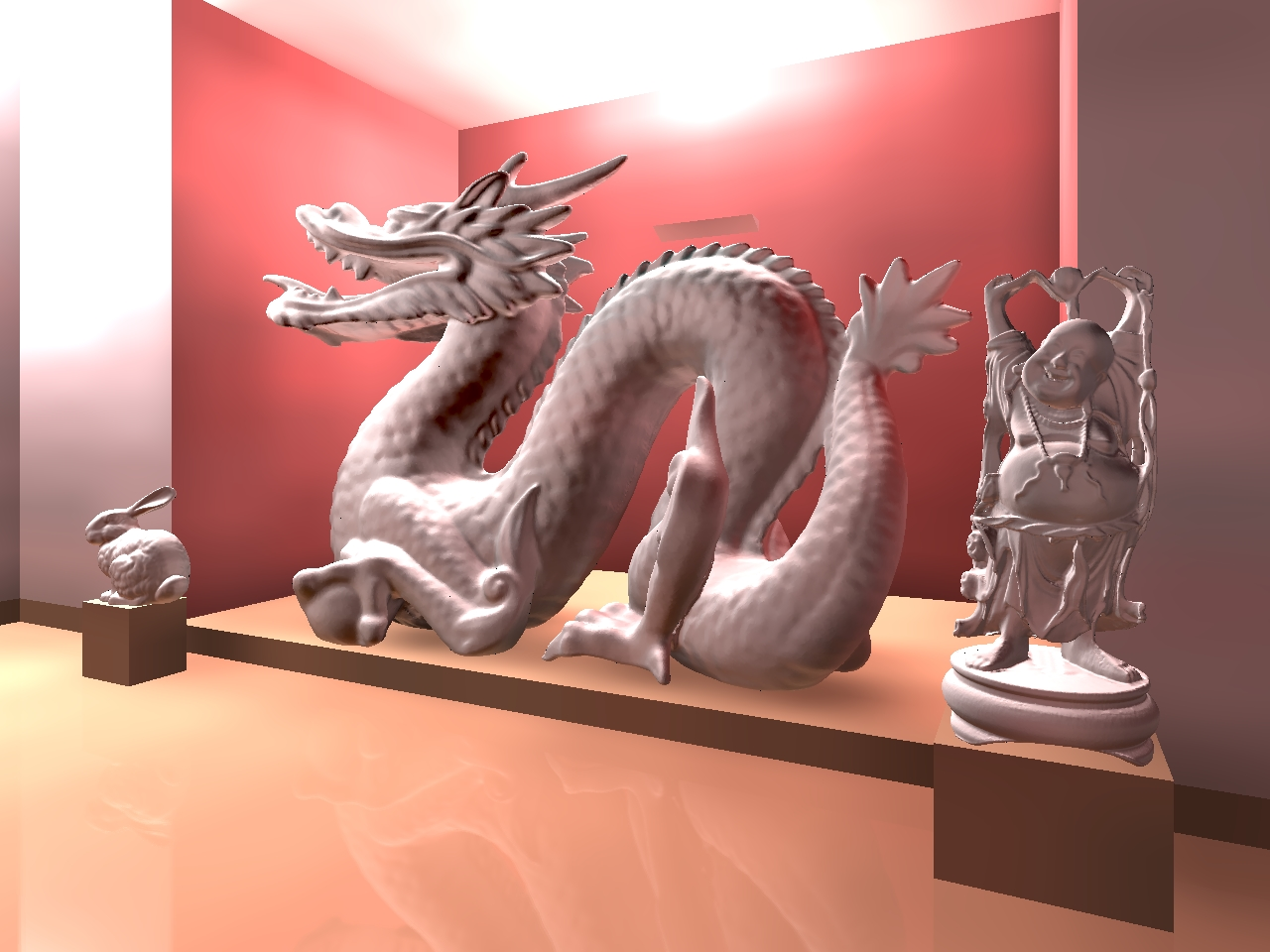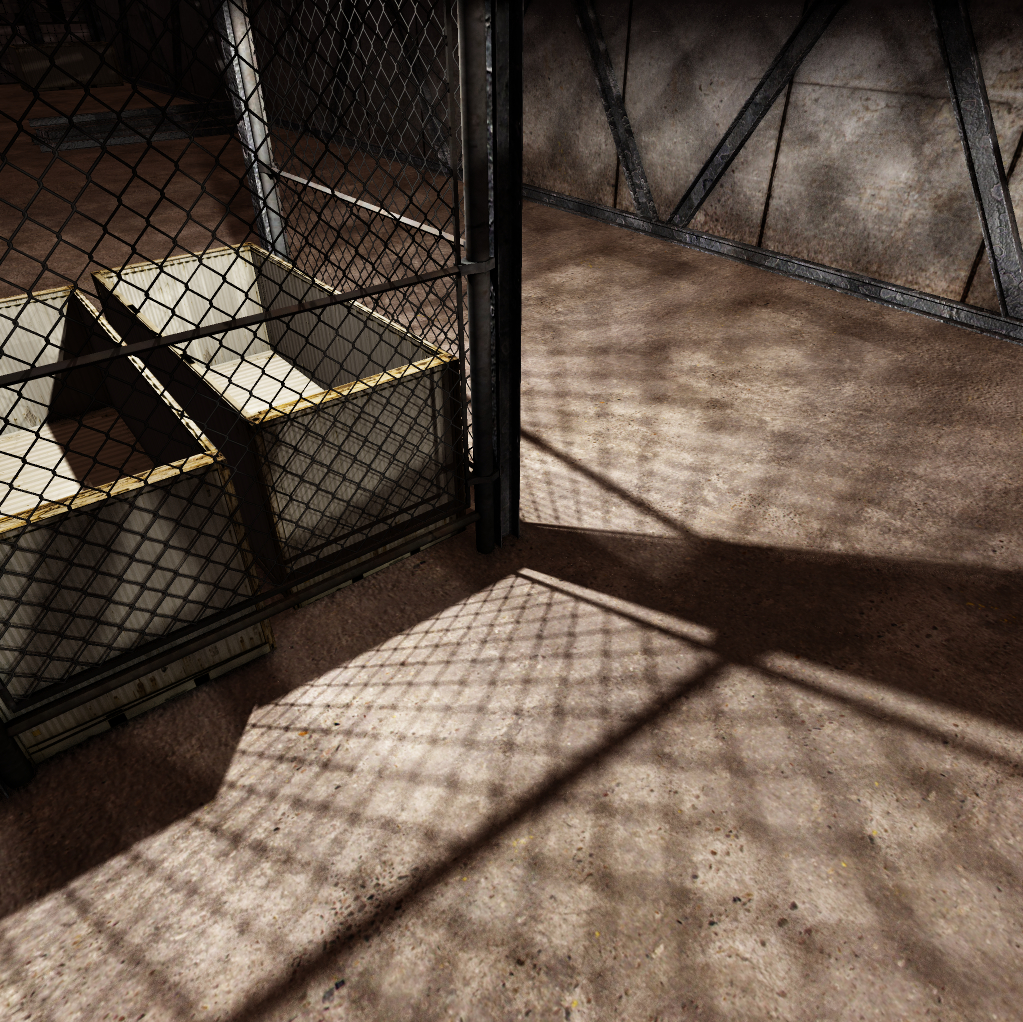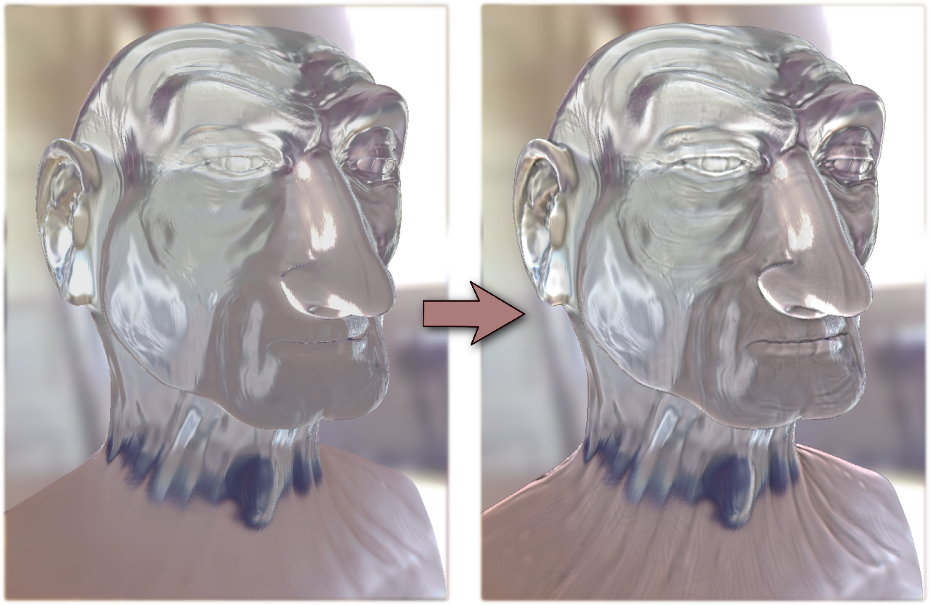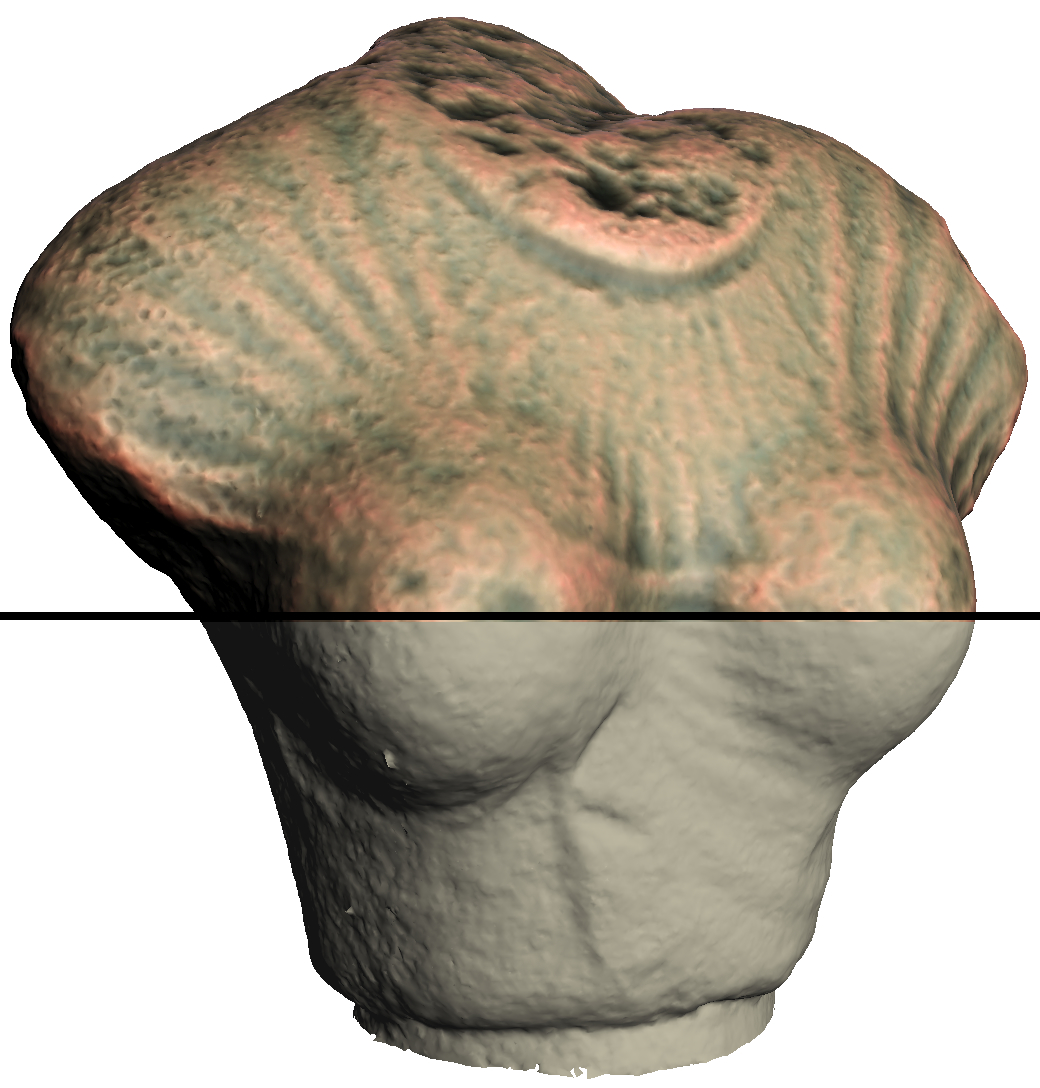Section: Research Program
Axis 3: Rendering, Visualization and Illustration
Challenge: How to offer the most legible signal to the final observer in real-time?
Results: High-level shading primitives, expressive rendering techniques for object depiction, real-time realistic rendering algorithms
|
The main goal of this axis is to offer to the final observer, in this case mostly a human user, the most legible signal in real-time. Thanks to the analysis and to the decomposition in different phenomena resulting from interactions between light, shape, and matter (Axis 1), and their perception, we can use them to convey essential information in the most pertinent way. Here, the word pertinent can take various forms depending on the application.
In the context of scientific illustration and visualization, we are primarily interested in tools to convey shape or material characteristics of objects in animated 3D scenes. Expressive rendering techniques (see Figure 6 c,d) provide means for users to depict such features with their own style. To introduce our approach, we detail it from a shape-depiction point of view, domain where we have acquired a recognized expertise. Prior work in this area mostly focused on stylization primitives to achieve line-based rendering [98] , [62] or stylized shading [34] ,[10] with various levels of abstraction. A clear representation of important 3D object features remains a major challenge for better shape depiction, stylization and abstraction purposes. Most existing representations provide only local properties (e.g., curvature), and thus lack characterization of broader shape features. To overcome this limitation, we are developing higher level descriptions of shape [26] with increased robustness to sparsity, noise, and outliers. This is achieved in close collaboration with Axis 1 by the use of higher-order local fitting methods, multi-scale analysis, and global regularization techniques. In order not to neglect the observer and the material characteristics of the objects, we couple this approach with an analysis of the appearance model. To our knowledge, this is an approach which has not been considered yet. This research direction is at the heart of the MANAO project, and has a strong connection with the analysis we plan to conduct in Axis 1. Material characteristics are always considered at the light ray level, but an understanding of higher-level primitives (like the shape of highlights and their motion) would help us to produce more legible renderings and permit novel stylizations; for instance, there is no method that is today able to create stylized renderings that follow the motion of highlights or shadows. We also believe such tools also play a fundamental role for geometry processing purposes (such as shape matching, reassembly, simplification), as well as for editing purposes as discussed in Axis 4.
In the context of real-time photo-realistic rendering ((see Figure 6 a,b), the challenge is to compute the most plausible images with minimal effort. During the last decade, a lot of work has been devoted to design approximate but real-time rendering algorithms of complex lighting phenomena such as soft-shadows [99] , motion blur [46] , depth of field [89] , reflexions, refractions, and inter-reflexions. For most of these effects it becomes harder to discover fundamentally new and faster methods. On the other hand, we believe that significant speedup can still be achieved through more clever use of massively parallel architectures of the current and upcoming hardware, and/or through more clever tuning of the current algorithms. In particular, regarding the second aspect, we remark that most of the proposed algorithms depend on several parameters which can be used to trade the speed over the quality. Significant speed-up could thus be achieved by identifying effects that would be masked or facilitated and thus devote appropriate computational resources to the rendering [64] , [45] . Indeed, the algorithm parameters controlling the quality vs speed are numerous without a direct mapping between their values and their effect. Moreover, their ideal values vary over space and time, and to be effective such an auto-tuning mechanism has to be extremely fast such that its cost is largely compensated by its gain. We believe that our various work on the analysis of the appearance such as in Axis 1 could be beneficial for such purpose too.
Realistic and real-time rendering is closely related to Axis 2: real-time rendering is a requirement to close the loop between real world and digital world. We have to thus develop algorithms and rendering primitives that allow the integration of the acquired data into real-time techniques. We have also to take care of that these real-time techniques have to work with new display systems. For instance, stereo, and more generally multi-view displays are based on the multiplication of simultaneous images. Brute force solutions consist in independent rendering pipeline for each viewpoint. A more energy-efficient solution would take advantages of the computation parts that may be factorized. Another example is the rendering techniques based on image processing, such as our work on augmented reality [38] . Independent image processing for each viewpoint may disturb the feeling of depth by introducing inconsistent information in each images. Finally, more dedicated displays [55] would require new rendering pipelines.






